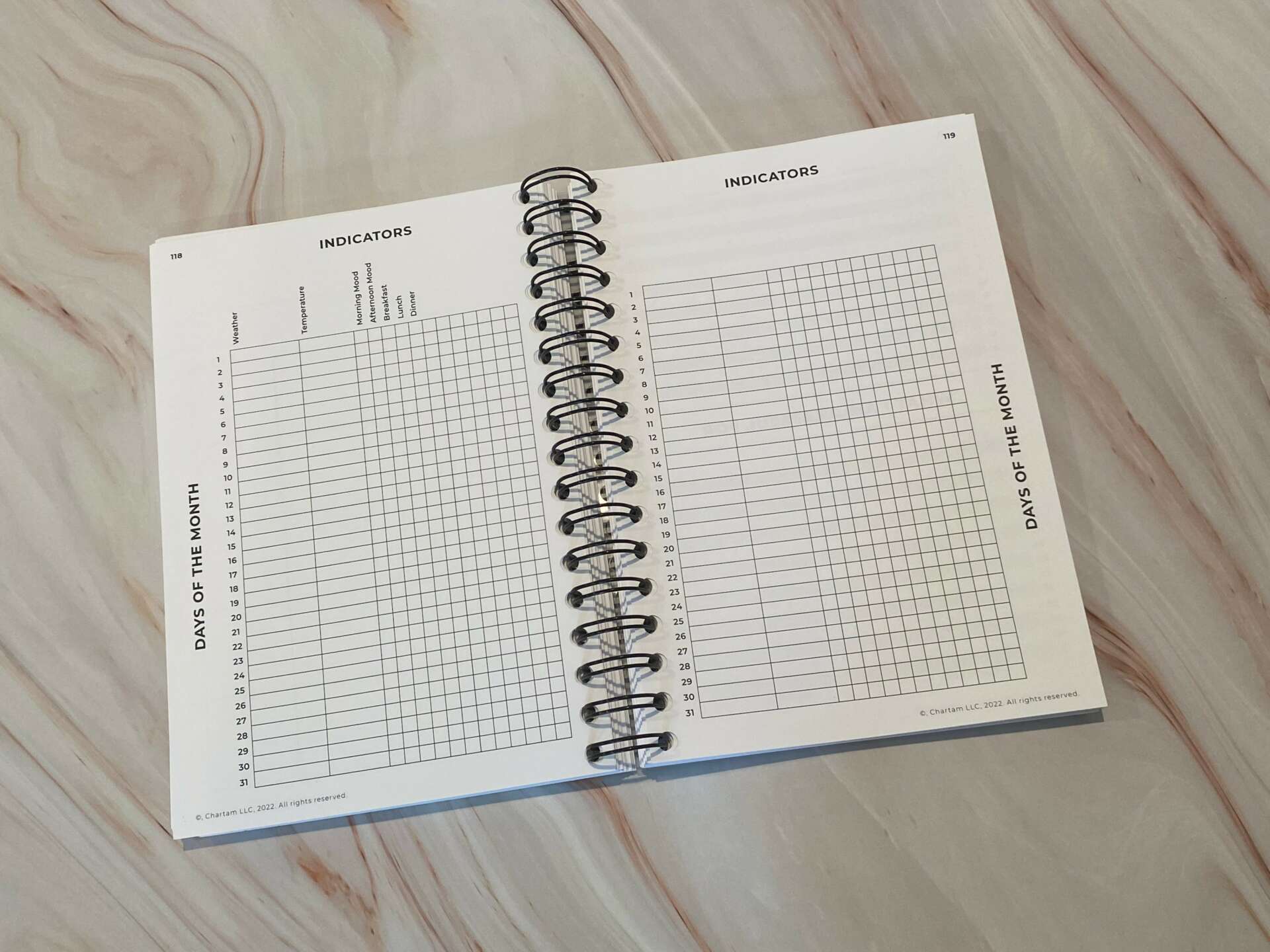We caught up with the brilliant and insightful Elia Meltzer a few weeks ago and have shared our conversation below.
Elia, looking forward to hearing all of your stories today. Let’s kick things off with an introduction to our readers.
My name is Elia Meltzer and I am a mental health patient. I first started experiencing mental illness symptoms when I was around the age of 12. While in high school, things intensified to the point where I was actively self-harming and attempting suicide.
My biggest struggle when trying to get healthy was trying to communicate the severity and frequency of my symptoms with my doctors. This struggle is why I created Chartam; so other students don’t have to experience the same struggles I did.
My solution to this problem was creating a physical product in the form of a planner since students use planners every day when in school. Oftentimes, the school provides planners to students on their first day back from summer break. Unlike other planners, this tool has pages to help students visually keep track of their symptoms. They can also keep track of their sleep patterns since sleep is closely tied to mental illness.
I’m proud to say that several doctors, clinicians, and therapists use our planners to treat our patients. We are currently trying to see if some school districts would like to offer the planner to students who actively see the school’s therapist.
.
Great, appreciate you sharing that with us. Before we ask you to share more of your insights, can you take a moment to introduce your mission – what is it and what’s the story behind why it’s your mission?
In 2023, I am a healthy young adult working to help mental health patients communicate with their doctors about the severity of their symptoms. However, that is not how my story started.
It began in 2013 when I was in middle school. Between the bullying and the hormonal changes that most middle school students endure, life was not going well. That was the first time I had ever experienced depression, a sense that life was not worth living, and wanting to end it all.
High school was not much better. The therapist I saw was not trained to properly help me in my situation. She believed that music and walks in the park could cure my depression, anxiety, and panic disorders. She never diagnosed me with PTSD, which led to the condition festering for four long years.
I lied to her while seeing her as a patient. I told her exactly what she wanted to hear because I did not want to bear the label “insane” or “crazy”. The psychiatrist at the time put me on medicines that did not fully treat my depression and made me feel worse, both emotionally and physically.
Luckily, things did change. After self-harming many times and surviving several suicide attempts, I found the right doctors. I got on the right medicines and saw a psychologist who had the proper training to handle complex situations like mine.
I have been stable since the summer of 2019. After experiencing years of internal pain, I developed a method to holistically track the condition of my mental health. Psychology is not an exact medicine, so my technique is not perfect. With that said, I used several indicators to paint an accurate picture of the quality of my health.
What metrics did I use?
Mental health and mood go hand in hand, but so do the quality of sleep, monthly female hormone cycles, and motivation to do simple tasks like taking a shower, and even eating meals. I began tracking all of these metrics, and more, in a tool that I began to develop in December 2020. It took over 10 years, from first experiencing symptoms of depression, to find a tool that could help me communicate with my doctors. I had to make it myself and now I can offer it to others in the form of a planner.
The idea for this mental health planner stemmed from my first bullet journal. I took hours each month creating the next month’s spreads, from normal planner spreads to extensive tracker pages. While taking the time to create the next month’s planner pages, I was fully aware that I would not have been able to do so when my depression and anxiety disorders were raging. I knew that I needed to create a pre-made planner for patients to use at their doctor appointments.
That’s why I created this company. I provide people suffering from mental illness with a tool to help take back control of their lives. Patients can show doctors their planners, and thus allow the doctors to see an accurate picture of their patient’s state of mind.
Now that I am healthy and stable, I use my planner to better myself, set and achieve my goals and dreams, and successfully implement new healthy habits or ditch the bad habits that are oh-so-hard to break.
I wish that I had access to a visual data tool like my planner when I began to show symptoms of depression. it would have helped me work through my illnesses so much faster and without falling to the depths I did.
If your story sounds anything like mine, I invite you to try one of my curated planners. I wish you the best on your journey to health and happiness.

Can you open up about how you funded your business?
Funding for Chartam came from four different sources: The EEOC Side Hustle Challenge, the University of Akron’s Insitute for Leadership, the Ex [L] Center’s 10K Challenge, and the Stark Tank Challenge.
I managed to earn Chartam $200 from participating in the EEOC Side Hustle Challenge. I also won $500 for “best social media” in their pitch competition.
The Insitute For Leadership at the University of Akron gave me $2000 for their experiential learning program. With the help of this program, I was able to pay students to help me create the product and print out the first batch of products.
I won third place in both the 10K challenge and the Stark Tank Challenge, allowing the business to earn $2,500 from each pitch.
In total, I was able to raise $7700 to start my business in a year.
Do you sell on your site, or do you use a platform like Amazon, Etsy, Cratejoy, etc?
We sell our mental health planners through our website. By using Squarespace, we have full control over how the product looks online, the customer’s journey on the website, and scheduling appointments to discuss further. We also sell directly to healthcare providers and other B2B clients with the help of PayPal.
I found it difficult to sell on Etsy because many products are mass-made. There is so much noise on Etsy for mental health planners that it drowns out any new players in the space. We were unable to make any sales through Etsy in the six months we had an account.

Contact Info:
- Website: https://www.chartam.org/
- Instagram: https://www.instagram.com/chartam.llc/
- Facebook: https://www.facebook.com/p/Chartam-LLC-100083859745008/
- Linkedin: https://www.linkedin.com/company/chartam-llc
- Youtube: https://www.youtube.com/channel/UCxi0QfYZNNneB5ycGrYuXUg
- TikTok: https://www.tiktok.com/@chartam_llc
- Pinterest: https://www.pinterest.com/chartamllc/


